
Maruja Mallo
Study for Cabeza de mujer, 1940-1944. Oil on cardboard, 50 x 40 cm
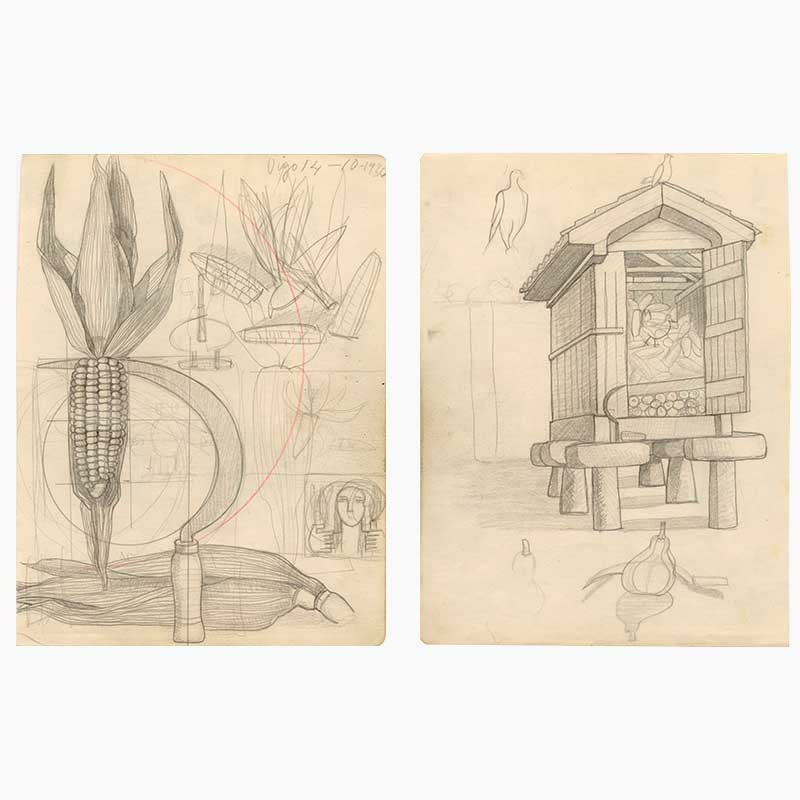
Maruja Mallo
Cuaderno de Galicia, July 1936 – March 1937. Pencil on paper, 21.2 x 27.5 cm [selection]
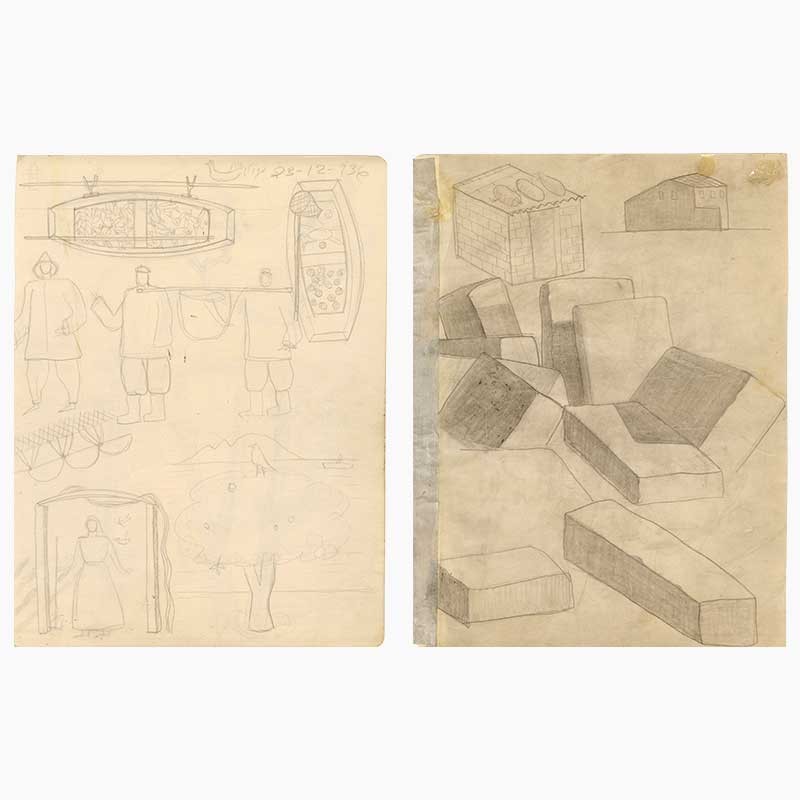
Maruja Mallo
Cuaderno de Galicia, July 1936 – March 1937. Pencil on paper, 21.2 x 27.5 cm [selection]
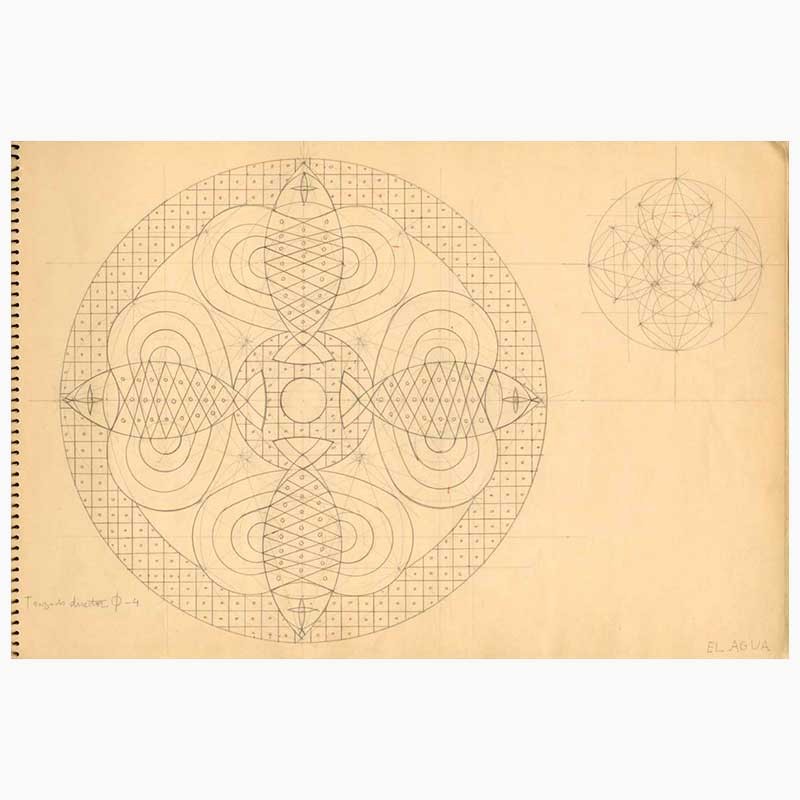
Maruja Mallo
«El Agua», in Cuaderno de cerámica, October 1935 - May 1936. Pencil and ink on paper, 24.5 x 37.5 cm [selection]
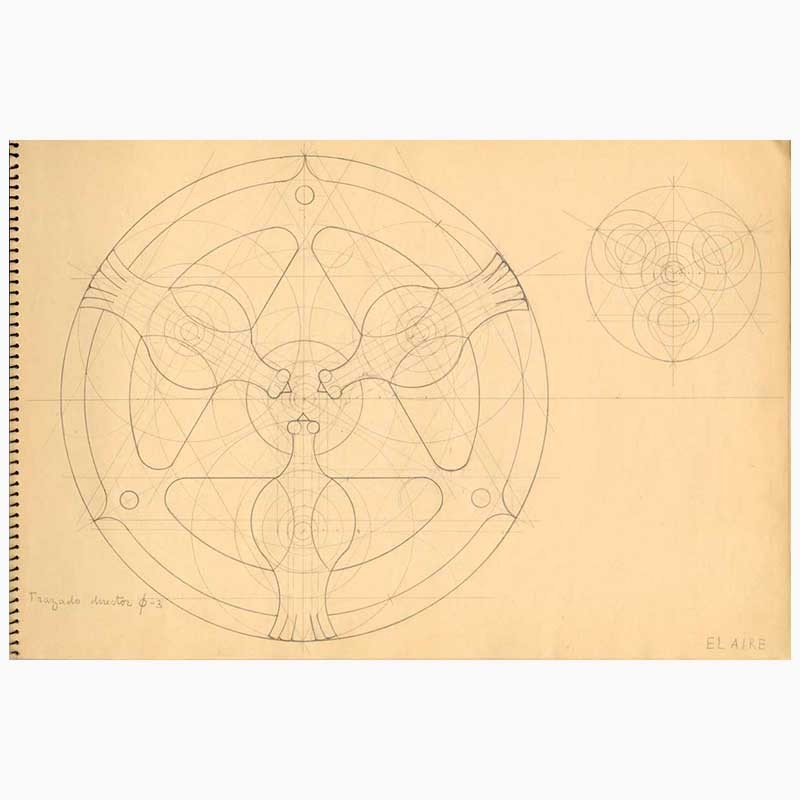
Maruja Mallo
«El aire», in Cuaderno de cerámica, October 1935 - May 1936. Pencil and ink on paper, 24.5 x 37.5 cm [selection]
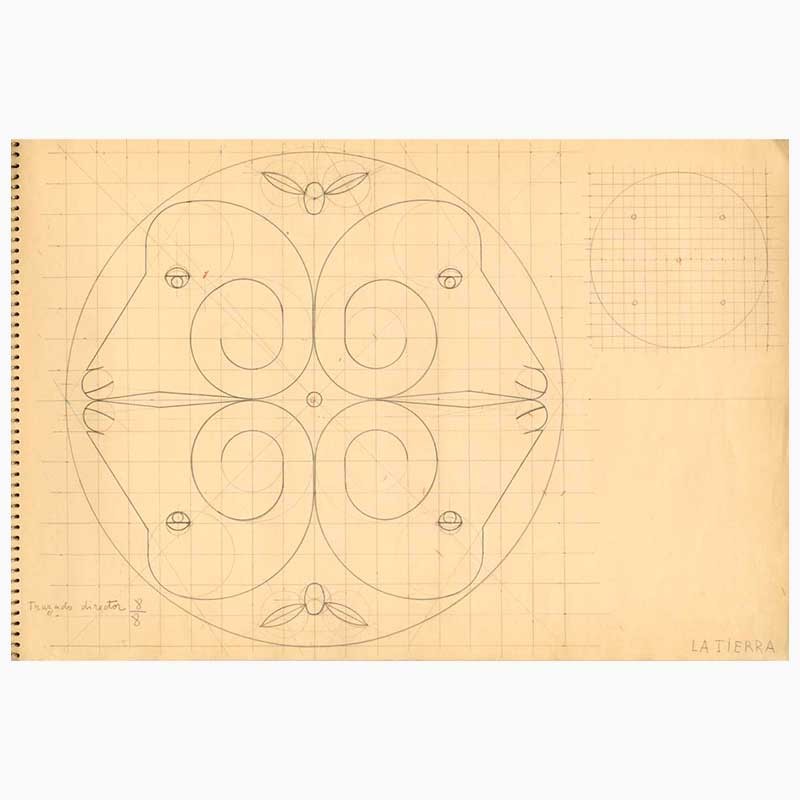
Maruja Mallo
«La tierra», in Cuaderno de cerámica, October 1935 - May 1936. Pencil and ink on paper, 24.5 x 37.5 cm [selection]

Letter from Maruja Mallo to Carmen Conde, Madrid, n.d. [1928?]
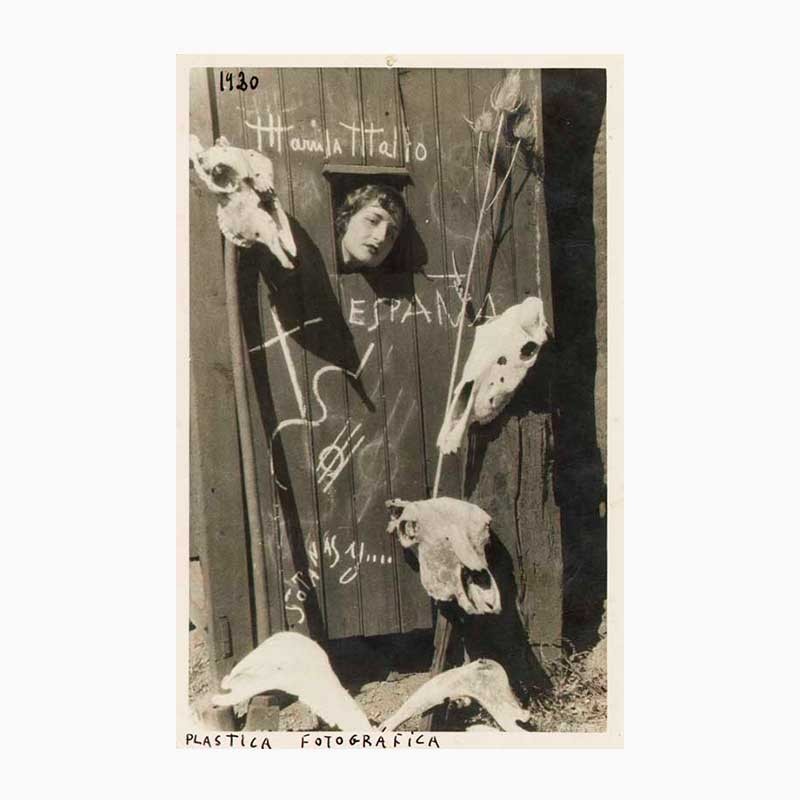
Maruja Mallo
Plástica fotográfica, 1930. Intervened picture, 13.7 x 8.8 cm

Maruja Mallo, Madrid: ADLAN, 1936
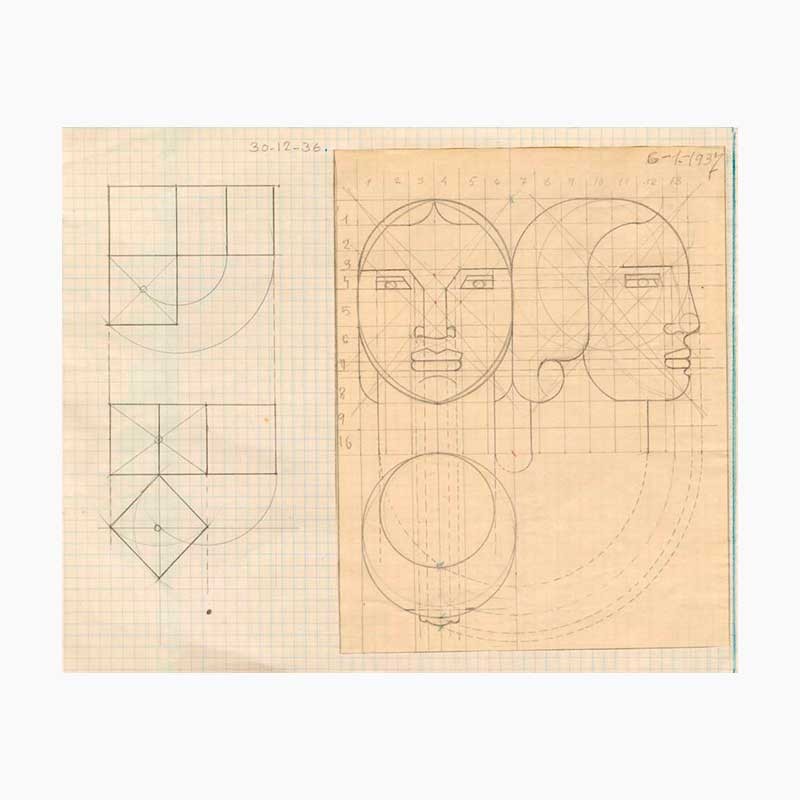
Maruja Mallo
Perspective of a cube and of a head, 1936-1937. Pencil and coloured pencil on paper, 21.5 x 49 cm

Maruja Mallo
Autorretrato con manto de algas, 1945. Intervened picture, 23.8 x 16.4 cm
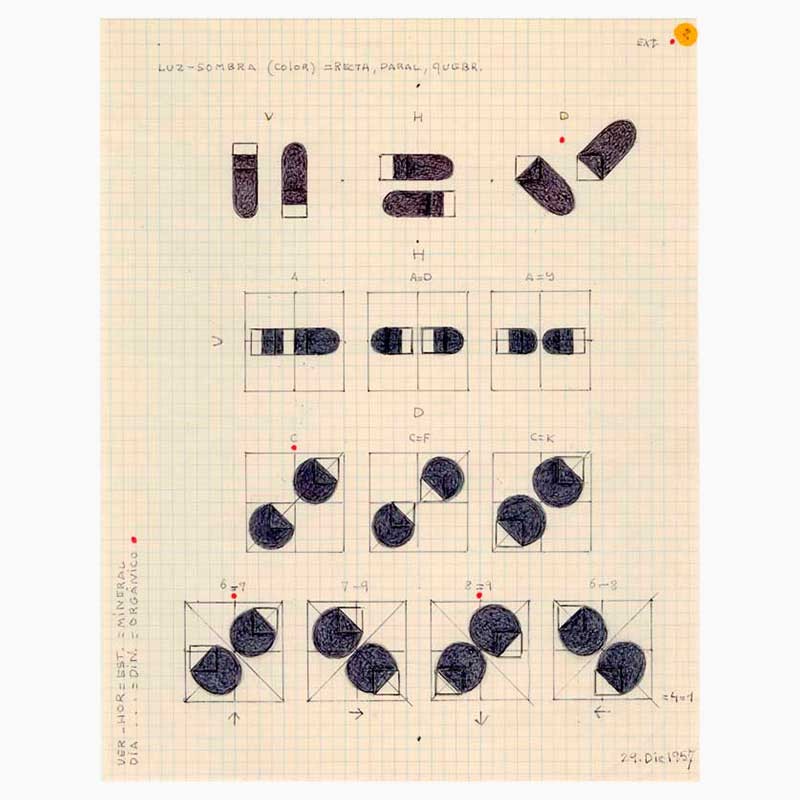
Maruja Mallo
Studies of light and shadow, 29 December 1957. Ink, pencil and gouache on paper, 28 x 22 cm

Maruja Mallo
Sim.Din., symmetric studies of schematic figures, August 1950 - December 1957. Ink, pencil and coloured pencil on paper, 22 x 15.9 cm
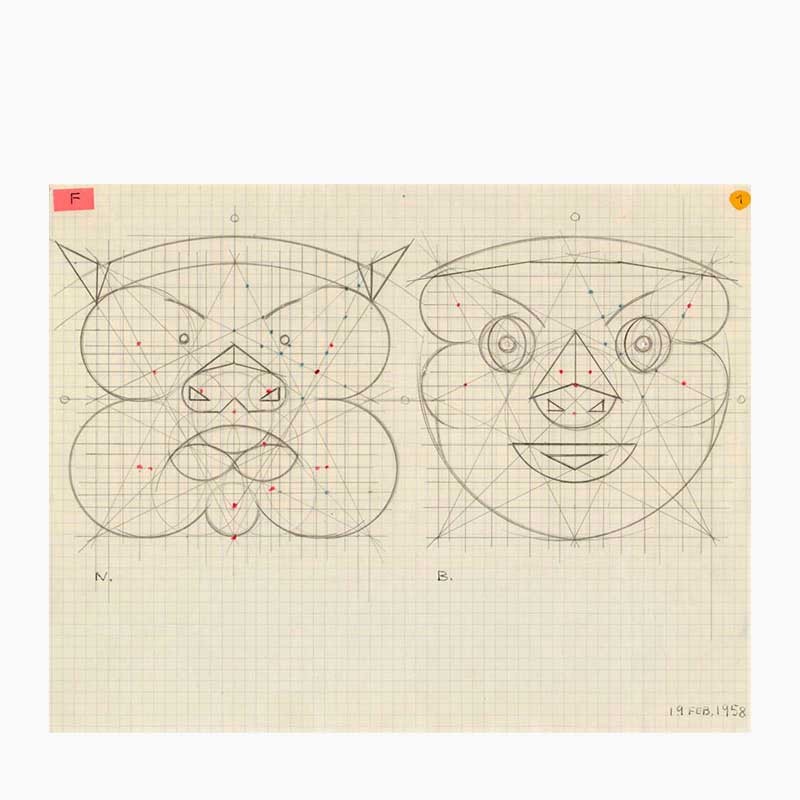
Maruja Mallo
Masks, 19 February 1958. Ink, pencil, coloured pencil and gouache on paper, 22 x 28 cm
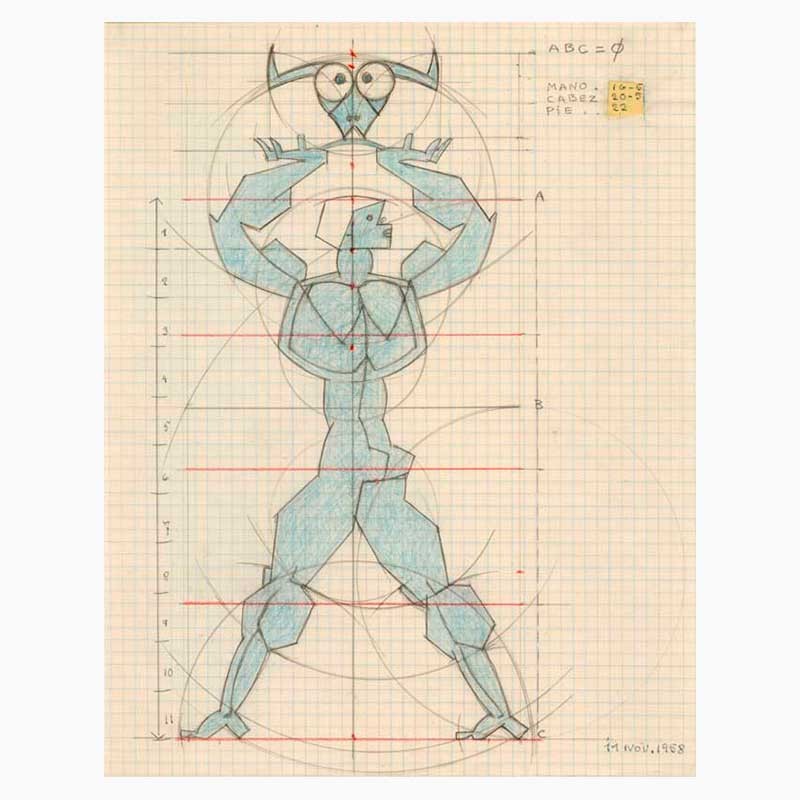
Maruja Mallo
Study for Atlas, 11 November 1958. Ink, pencil and coloured pencil on paper, 28 x 22 cm

Maruja Mallo
Cuerpo H, three studies of Atlas couples, n.d. [1958?]. Mixed media on paper, 22 x 28 cm
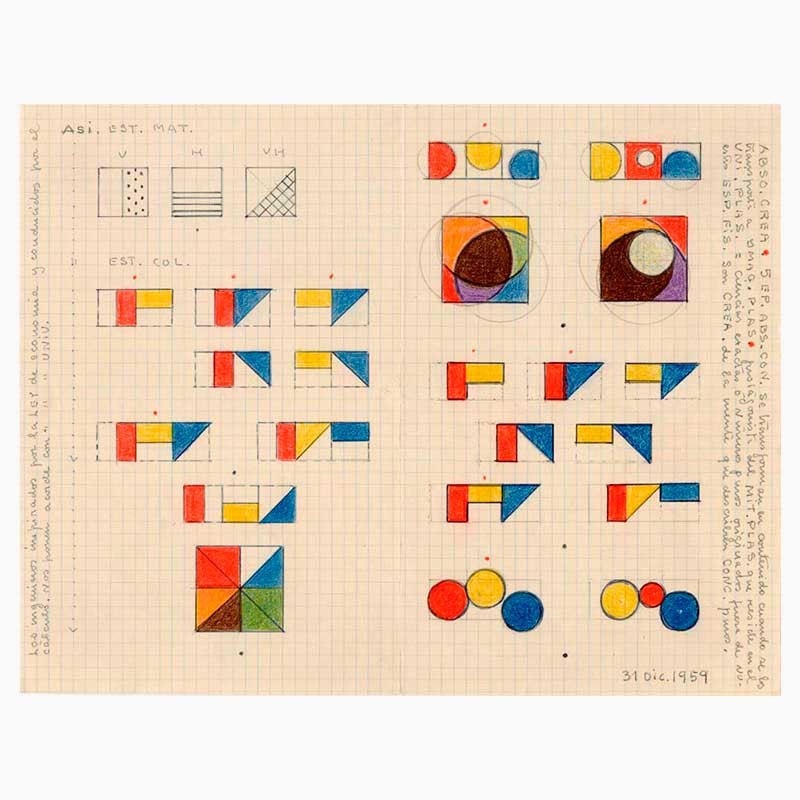
Maruja Mallo
Studies of colour, 31 December 1959. Ink, pencil and crayon on paper, 22 x 28 cm
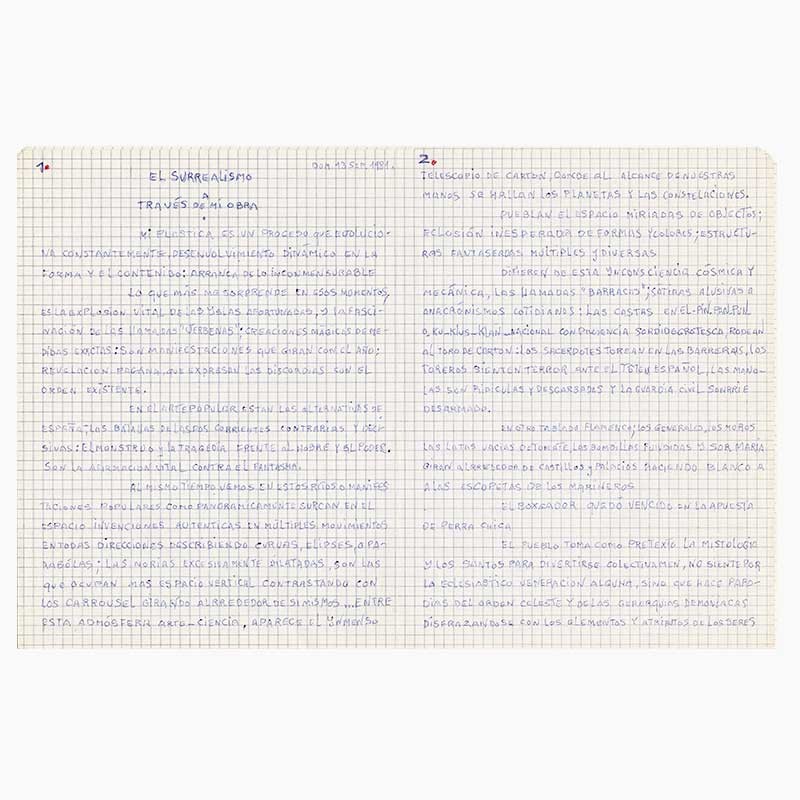
Maruja Mallo
Manuscript of El surrealismo a través de mi obra, 13 September 1981

Maruja Mallo
Studies of female heads, n.d. Ink on paper, 21.4 x 18.4 cm
780 works of art and documents.
Maruja Mallo (Viveiro, Lugo, 1902-Madrid, 1995) was one of the most important Spanish women artists of the twentieth century. Her real name was Ana María Gómez González. In 1922, she moved with her family to Madrid, where she studied at the San Fernando Royal Academy of Fine Arts. There she met Salvador Dalí, who introduced her to surrealism and brought her into contact with prominent members of the so-called Generation of ’27, such as García Lorca, Luis Buñuel, María Zambrano, Margarita Manso and Concha Méndez. During this stage of her life she illustrated several works by the poet Rafael Alberti, met Ortega y Gasset, collaborated as an illustrator in Revista de Occidente and held her first individual exhibition in the magazine’s salons.
In the 1930s, she began to travel to Paris, mingling with André Breton, Max Ernst, Magritte, De Chirico and Miró, and executing a fully surrealist pictorial work. When the Spanish Civil War broke out, she went first to Portugal and then to the Americas, living for periods in Buenos Aires and New York. She returned to Spain in the early 1960s, settling in Madrid, whose stale cultural environment she did not fit into, and neither she nor her work gained the recognition they deserved until the end of the 1970s and the beginning of the following decade. In 1979, she held an anthological exhibition in which she showed her last pictorial series, Los moradores del vacío, and in 1982 the Spanish Ministry of Culture awarded her the la Medalla de Oro al mérito en las Bellas Artes. Later she received the Medalla de Oro de Madrid (1990) and the Medalla de Oro de la Xunta de Galicia (1991). At the age of 90, she exhibited the works completed during her period in the Americas for the first time in the Guillermo de Osma Gallery in Madrid.
The Maruja Mallo Archive is made up of more than 750 items, including hundreds of original works (paintings, drawings from the 40s, 50s and 70s, notebooks, autographs), photographs (from the 40s), correspondence, books and catalogs (from the 20s to the 70s) and press articles.